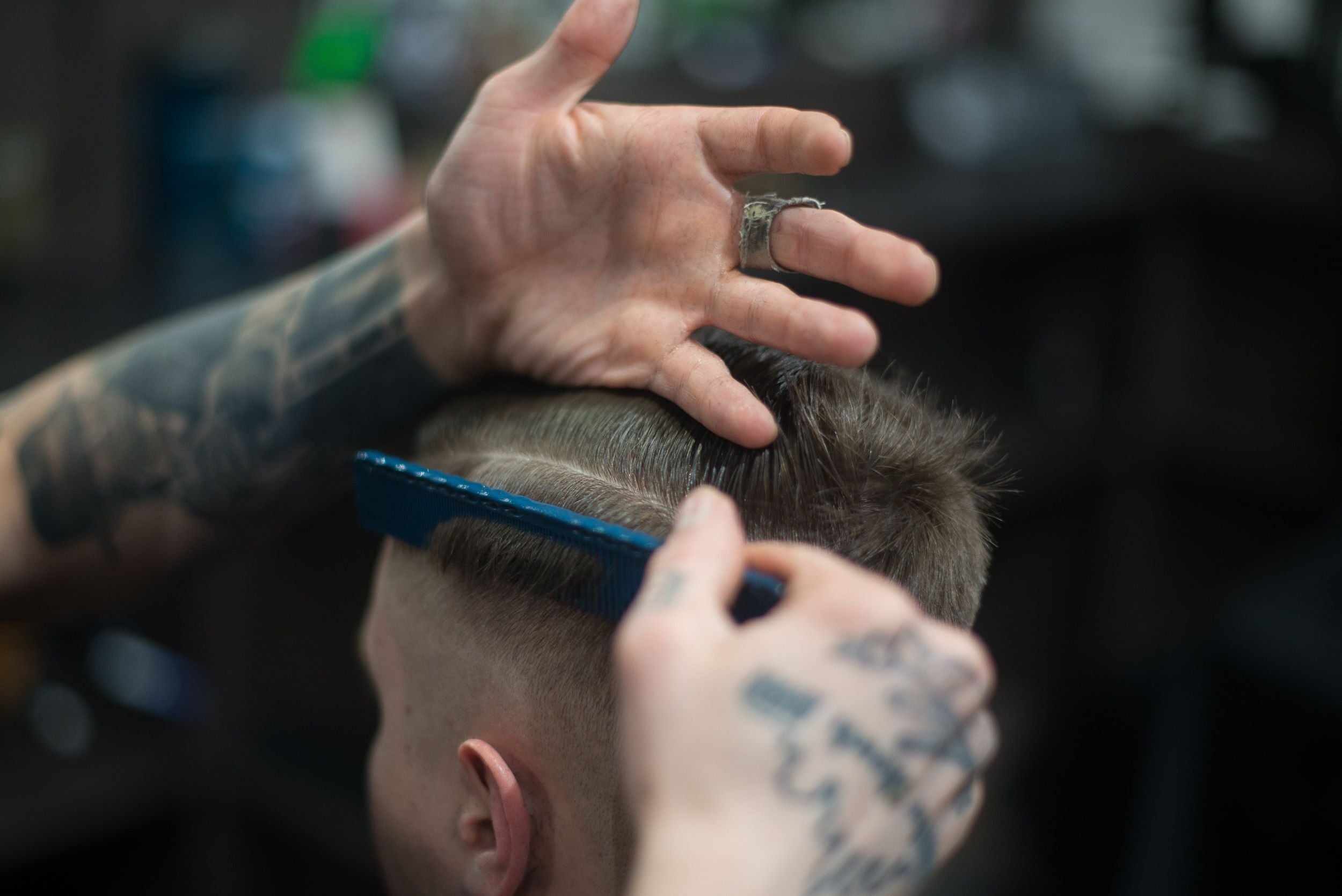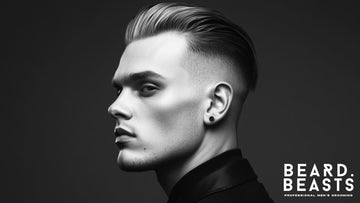Smart Pieces Of Advice You Will Get Only From Hair Pros
Every strand of hair tells a story, and no one understands this narrative better than professional hair stylists. Behind the sheen and bounce of healthy hair is a trove of industry secrets that can transform your hair care routine. In the realm of hair care, professional advice is invaluable, often diverging from common myths and misconceptions.
This guide assembles smart tips and tricks straight from hair pros, designed to nourish, protect, and perfect your locks. Whether it's choosing the right products or mastering the art of the blowout, we're here to unveil the insights that will take your hair game to the next level.

Understanding Your Hair Type
Before diving into any hair care routine, recognizing your unique hair type is the cornerstone of effective hair management. Different hair textures require distinct approaches for maintenance and styling. Understanding your hair type is critical as it dictates which products and treatments will work best for you. From fine and straight to thick and coily, each hair type has its own needs and vulnerabilities.
Start by observing your hair's natural state after washing. Does it lay flat or spring into curls or waves? Assessing your hair's curl pattern, porosity, volume, and texture can guide you toward a suitable hair care regimen. Once you know your hair type, tailor your hair care routine with specialized products. For example, curly hair might thrive with more moisturizing conditioners, while fine hair could benefit from lightweight volumizing sprays.
Baldness, thinning, and hair loss are also common issues that require a personalized approach. Consult with a hair professional to determine the underlying causes of these conditions and develop a suitable treatment plan.
The Importance of Trimming Regularly
Regular trims are essential to maintain healthy hair. They prevent split ends from traveling up the hair shaft and causing more damage. Split ends are not just a cosmetic concern—they can result in hair breakage and diminished growth. Regular trims remove split ends and encourage healthier hair. The frequency of trims varies; people with faster hair growth might need them more often. A general recommendation is every 6-8 weeks but consult with your stylist for personalized advice.
During your salon visits, it's the perfect time to get professional insights about your hair's condition and receive recommendations for hair care products that suit your needs. If you're more of a DIYer, choose blending shears over scissors to achieve a softer and smoother finish. Keep in mind that trimming your hair is not the same as cutting it; trims are small snips to maintain your hair's length and health.
Shampooing: Less is More
Hair pros agree that when it comes to shampooing, less frequency can lead to healthier hair. Overwashing can strip away natural oils critical for hair health. Shampoo is designed to cleanse your scalp and hair by removing dirt, oil, and product buildup. However, too much shampooing can lead to dry, brittle strands. Determining how often to shampoo depends on your hair type and lifestyle. Those with oilier scalps may need more frequent washes, while those with dryer hair might shampoo less often.
On days you skip shampoo, consider rinsing with water and using conditioner to refresh your hair without stripping its natural oils. Dry shampoos can also absorb excess oil without the need for full washing. Men's hair also has its own set of rules; short and coarse hair might need daily washing, while longer hair could do with less. Not only will washing less frequently help keep your hair healthy, but it also saves you time and money on hair care products.
Mastering the Art of the Blowout
A salon-quality blowout can make your hair look polished and voluminous. Invest in a high-quality hairdryer with various heat settings and a round brush for tension and lift. These tools are vital for achieving salon-like results. Prep your hair with a heat protectant, and work
in small sections, starting from the nape of the neck. Keep the nozzle pointed downwards to prevent frizz and add shine. To make your blowout last, use dry shampoo at the roots to absorb oil and sleep on a silk pillowcase to minimize friction and frizz.
Additionally, learning how to use hair rollers and velcro rollers can also help create volume, curls, or waves without excessive heat. These methods can be especially beneficial for those with fine or damaged hair who want to avoid blow drying altogether. Plus, using rollers can give your hair an added body and texture for a more natural look.
Deep Conditioning: Your Hair's Best Friend
Deep conditioning treatments are an essential part of any hair care routine to replenish moisture and restore hair’s elasticity. Consistent deep conditioning can prevent damage, reduce frizz, and keep hair looking luscious and radiant. Apply the conditioner generously, focusing on the mid-lengths to ends, and leave it in for the recommended time. Use a heat cap or towel to help the treatment penetrate deeply. Aim to deep condition your hair once a week or bi-weekly, depending on how dry or damaged your hair is. This will ensure maximum hydration and strength over time.
Also, be mindful of the ingredients in your deep conditioner. Avoid harsh chemicals such as sulfates and parabens, which can strip away natural oils and cause more harm than good. Instead, opt for nourishing ingredients like shea butter, argan oil, and coconut oil that will deeply moisturize and repair your hair. On top of that, consider incorporating regular hot oil treatments to nourish and strengthen your hair from within.
Protecting Hair From Heat Damage
Heat styling tools can take a toll on your hair, but with the right protection, you can minimize damage. Never use hot tools on damp hair and always apply a heat protectant spray or serum before styling to create a barrier between your hair and the heat. Adjust the temperature of your styling tools according to your hair type; finer hair requires lower temperatures, while thicker hair can handle more heat. On days you want to give your hair a break, explore heatless styling options like braids, buns, or twists that can create waves and curls without the risk of heat damage.
Keep in mind that prevention is key when it comes to heat damage. Regularly trimming your hair and deep conditioning can help repair existing damage and prevent further breakage from heat styling. Not only will your hair look healthier, but it will also feel stronger and more manageable. Plus, treating your hair with care will lead to longer and thicker locks in the long run.
Choosing the Right Hair Care Products
The market is flooded with hair care products, and it can be overwhelming to choose the right ones. Steer clear of products containing harsh sulfates, alcohols, and silicones that can strip your hair of natural oils and lead to breakage. Educate yourself on ingredients and look
for nourishing components like natural oils, proteins, and botanical extracts. Your stylist can recommend specific products tailored to your hair types and concerns, such as color-safe shampoos for dyed hair or densifying products for thinning hair.
Not to mention, it's always helpful to invest in quality hair tools like a detangling brush, a wide-tooth comb, and a microfiber towel. These tools are gentle on your hair and help prevent damage while styling or drying. Don't forget to switch up your hair care routine every season, as your hair's needs change with the weather and environment.
Embracing Natural Texture and Color
Embracing your hair's natural texture and color can revolutionize your hair care routine and boost confidence. Accepting and enhancing your natural hair texture and color can lead to a simpler and healthier hair regimen. Use products that enhance your hair's natural qualities, such as curl creams for curly hair or color-enhancing conditioners for natural hair color. If you've been straightening or coloring your hair, transitioning to its natural state may take time. Consult with a pro to minimize damage and discover styles that work with your hair's inherent properties.
Don't forget that healthy hair starts from the inside out. A balanced diet, regular exercise, and staying hydrated can also contribute to stronger, more resilient hair. Plus, don't be afraid to experiment with different styles and products until you find the perfect routine for your hair. With these tips from hair pros, you'll have all the tools and knowledge to achieve healthy, beautiful locks. So go forth and embrace your crowning glory!

In conclusion, taking care of your hair need not be a convoluted affair. Equipped with these pro tips, you are now primed to unlock the true potential of your tresses, promoting health and vitality from the roots to the very tips. Remember to always be cognizant of your hair's particular needs, tailor your routine accordingly, and treat your locks with the love and attention they deserve.
With regular trims, appropriate product selection, and smart styling habits, maintaining gorgeous hair becomes not just an aspiration, but a sustainable reality. So here's to infusing your hair care routine with newfound wisdom, embracing the beauty of your unique hair type, and stepping forward each day with confidence and impeccable style.





